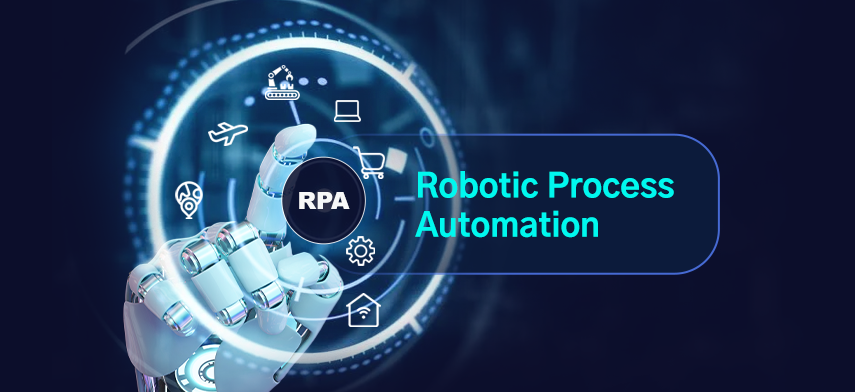
Image Source: FreeImages
What is eco-friendly digital transformation?
Eco-friendly digital transformation refers to the strategic integration of sustainable practices and resource optimization into the digital transformation initiatives of businesses. It involves leveraging digital technologies, processes, and innovations to reduce the environmental impact, conserve resources, and promote long-term sustainability across an organization’s operations.

Image Source: Pexels
In today’s rapidly evolving business landscape, where environmental consciousness and resource efficiency are becoming increasingly crucial, eco-friendly digital transformation emerges as a holistic approach to align digital transformation efforts with sustainability goals. By embracing this approach, businesses can not only enhance their environmental performance but also unlock new opportunities for operational efficiency, cost savings, and competitive advantage.
The importance of sustainability and resource optimization for businesses
Sustainability and resource optimization have become critical priorities for businesses of all sizes and sectors. As the global community grapples with the pressing challenges of climate change, resource depletion, and environmental degradation, businesses are under growing pressure to adopt more eco-friendly practices and reduce their carbon footprint.

Image Source: iStock
Beyond the ethical and social responsibility aspects, there are compelling business drivers for embracing sustainability and resource optimization. These include:
- Regulatory compliance: Governments and regulatory bodies are implementing stricter environmental regulations, requiring businesses to meet increasingly stringent standards for emissions, waste management, and resource consumption.
- Competitive advantage: Consumers and stakeholders are increasingly favoring businesses that demonstrate a commitment to sustainability, creating a competitive edge for eco-conscious organizations.
- Cost savings: Optimising resource usage, reducing energy consumption, and minimizing waste can lead to significant cost savings, enhancing a business’s financial performance.
- Brand reputation and customer loyalty: A strong sustainability profile can enhance a business’s brand reputation, attracting eco-conscious customers and fostering long-term loyalty.
- Talent attraction and retention: Millennials and Gen Z employees are often drawn to organizations that prioritize environmental and social responsibility, making eco-friendly practices a key factor in talent acquisition and retention.
Benefits of eco-friendly digital transformation
Embracing eco-friendly digital transformation can deliver a multitude of benefits for businesses, including:
- Environmental impact reduction: By leveraging digital technologies and optimizing resource usage, businesses can significantly reduce their carbon footprint, waste generation, and energy consumption, contributing to a healthier planet.
- Operational efficiency and cost savings: Eco-friendly digital transformation initiatives, such as automation, data-driven decision-making, and streamlined processes, can lead to improved operational efficiency and substantial cost savings.
- Regulatory compliance and risk mitigation: Aligning digital transformation with sustainability goals can help businesses stay ahead of evolving environmental regulations, mitigating legal and reputational risks.
- Competitive advantage and market differentiation: Demonstrating a strong commitment to sustainability through eco-friendly digital transformation can differentiate businesses from their competitors and appeal to environmentally conscious consumers and stakeholders.
- Talent attraction and employee engagement: Eco-friendly digital transformation initiatives can enhance a business’s reputation as a responsible and forward-thinking employer, attracting and retaining top talent who value environmental stewardship.
- Improved resource utilization and resilience: Businesses can build greater resilience against supply chain disruptions and resource scarcity by optimizing resource usage and implementing circular economy principles.
Key components of an eco-friendly digital transformation strategy
Developing an effective eco-friendly digital transformation strategy involves the integration of several key components:
- Sustainability assessment and goal-setting: Businesses should comprehensively assess their environmental impact and resource usage, then set measurable sustainability goals to drive their transformation efforts.
- Digital technology integration: Businesses should strategically leverage emerging digital technologies, such as cloud computing, the Internet of Things (IoT), artificial intelligence, and data analytics, to enhance resource efficiency, reduce emissions, and drive sustainable practices.
- Process optimization and automation: Businesses should identify and optimize their operational processes to eliminate waste, streamline resource consumption, and automate repetitive tasks, enhancing overall efficiency.
- Data-driven decision-making: Businesses should leverage data and analytics to make informed, data-driven decisions that support their sustainability objectives, such as optimizing energy usage, supply chain management, and waste reduction.
- Circular economy principles: Businesses should adopt circular economy principles, which focus on reducing, reusing, and recycling resources, to minimize waste and promote a more sustainable, closed-loop system.
- Stakeholder engagement and collaboration: Businesses should engage with their employees, customers, suppliers, and community stakeholders to foster a culture of sustainability, encourage collective action, and drive meaningful change.
- Continuous improvement and innovation: Businesses should establish robust monitoring and evaluation frameworks to track the progress of their eco-friendly digital transformation initiatives, and continuously explore new technologies, processes, and innovations to enhance their sustainability performance.
Case studies of successful eco-friendly digital transformations
Case Study 1: Schneider Electric’s Sustainable Operations Transformation
Schneider Electric, a global leader in energy management and automation solutions, has undertaken a comprehensive eco-friendly digital transformation to optimize its operations and reduce its environmental impact. By leveraging digital technologies, such as IoT-enabled smart buildings, predictive maintenance, and cloud-based analytics, Schneider Electric has been able to:
- Reduce energy consumption across its facilities by 12% since 2017
- Increase the use of renewable energy sources to 80% of its total energy mix
- Achieve a 45% reduction in its carbon emissions since 2017

Image Source: Schneider Electric
The company’s digital transformation efforts, combined with its focus on sustainability, have enabled it to enhance operational efficiency, lower costs, and position itself as a leader in the sustainable energy solutions market.
Case Study 2: Unilever’s Digitally-Enabled Circular Economy Initiatives
Unilever, the multinational consumer goods company, has been at the forefront of eco-friendly digital transformation by integrating circular economy principles into its operations. Through initiatives such as its “Sustainable Living” program and the deployment of digital technologies, Unilever has been able to:
- Increase the use of recycled plastic in its packaging to 75%
- Implement predictive analytics and AI-powered supply chain optimization to reduce waste and improve resource efficiency
- Develop digital platforms that enable consumers to access refill options and reusable packaging, promoting a more sustainable consumption model
Image Source: Unilever
Unilever’s commitment to sustainability, coupled with its strategic use of digital technologies, has not only reduced its environmental impact but also enhanced its brand reputation and customer loyalty.
Tools and technologies for driving sustainability and resource optimization
Businesses can leverage a range of digital tools and technologies to support their eco-friendly digital transformation efforts, including:
- Internet of Things (IoT): IoT-enabled sensors and devices can provide real-time data on energy consumption, waste generation, and resource utilization, enabling businesses to optimize their operations and reduce their environmental impact.

- Cloud computing and data analytics: Cloud-based platforms and advanced data analytics can help businesses gather, process, and interpret vast amounts of sustainability-related data, informing data-driven decision-making and driving continuous improvement.

- Artificial Intelligence (AI) and Machine Learning (ML): AI and ML algorithms can be used to automate and optimize various processes, such as predictive maintenance, supply chain optimization, and energy management, leading to enhanced resource efficiency and reduced environmental footprint.

- Blockchain technology: Blockchain can provide transparency and traceability in supply chains, enabling businesses to track the provenance and sustainability of their materials and products, and ensure compliance with environmental regulations.

- Robotic Process Automation (RPA): RPA can automate repetitive, manual tasks, reducing the need for physical resources and human intervention, thereby improving efficiency and minimizing waste.

- Building Information Modelling (BIM): BIM technology can help businesses design, construct, and manage buildings and infrastructure more sustainably, optimizing energy usage, resource consumption, and waste management.

- Collaboration and communication platforms: Digital collaboration and communication tools can facilitate remote work, reduce the need for physical office spaces, and minimize the environmental impact associated with commuting and business travel.

Best practices for implementing eco-friendly digital transformation initiatives
To successfully implement eco-friendly digital transformation initiatives, businesses should consider the following best practices:
- Establish a clear sustainability vision and strategy: Develop a comprehensive sustainability strategy that aligns with the organization’s overall business objectives and digital transformation goals.
- Secure executive-level commitment and support: Ensure that the organization’s leadership team is fully committed to the eco-friendly digital transformation journey and provides the necessary resources and guidance.
- Conduct a thorough assessment of the current state: Undertake a comprehensive analysis of the organization’s environmental impact, resource usage, and digital maturity to identify areas for improvement and prioritize initiatives.
- Adopt a phased, iterative approach: Implement eco-friendly digital transformation initiatives in a phased, iterative manner, allowing for continuous learning, adaptation, and refinement of the strategy.
- Encourage employee engagement and training: Foster a culture of sustainability by engaging employees, providing training on eco-friendly practices, and empowering them to contribute to the transformation efforts.
- Collaborate with external stakeholders: Engage with suppliers, customers, industry partners, and local communities to foster a collaborative ecosystem and drive collective action towards sustainability.
- Continuously monitor, measure, and report on progress: Establish robust monitoring and evaluation frameworks to track the impact of eco-friendly digital transformation initiatives, and regularly report on the organization’s sustainability performance.
- Embrace a culture of innovation and continuous improvement: Continuously explore new technologies, processes, and business models that can enhance the organization’s sustainability and resource optimization efforts.
Challenges and obstacles in adopting eco-friendly digital transformation
While the benefits of eco-friendly digital transformation are compelling, businesses may face several challenges and obstacles in their adoption, including:
- Technological and infrastructure limitations: Businesses may encounter technological constraints, such as outdated systems, legacy infrastructure, or limited access to emerging digital technologies, which can hinder their ability to implement sustainable solutions.
- Financial and budgetary constraints: Eco-friendly digital transformation initiatives may require significant upfront investments, which can be a barrier for some organizations, especially small and medium-sized enterprises.
- Organizational resistance to change: Transforming the organizational culture and mindset to embrace sustainability and resource optimization can be a complex and time-consuming process, often facing resistance from employees and stakeholders.
- Lack of skills and expertise: Businesses may struggle to find the necessary talent and expertise to design, implement, and manage eco-friendly digital transformation initiatives, requiring significant investment in training and upskilling.
- Regulatory and policy uncertainties: Evolving environmental regulations and policy frameworks can create uncertainty for businesses, making it challenging to align their eco-friendly digital transformation efforts with the changing landscape.
- Data availability and quality challenges: Businesses may face difficulties in accessing, integrating, and analyzing the data required to make informed decisions and measure the impact of their eco-friendly digital transformation initiatives.
- Supply chain complexities: Integrating sustainability and resource optimization across the entire supply chain can be a complex and multifaceted challenge, requiring collaboration and coordination with a diverse network of suppliers and partners.
Measuring the impact of eco-friendly digital transformation on businesses
Measuring the impact of eco-friendly digital transformation on businesses is crucial for demonstrating the tangible benefits, justifying investments, and driving continuous improvement. Businesses can leverage a range of key performance indicators (KPIs) to track the progress and impact of their eco-friendly digital transformation initiatives, including:
- Environmental impact metrics:
- Carbon footprint reduction (e.g., tonnes of CO2 equivalent)
- Energy consumption and renewable energy usage (e.g., kWh, percentage of renewable energy)
- Water consumption and waste reduction (e.g., cubic meters, tonnes of waste)
- Circular economy metrics (e.g., percentage of recycled/reused materials)
- Operational efficiency metrics:
- Resource utilization and productivity (e.g., energy efficiency, material efficiency)
- Process automation and optimization (e.g., percentage of automated processes, cycle time reduction)
- Supply chain optimization (e.g., inventory turnover, transportation emissions)
- Financial and economic metrics:
- Cost savings (e.g., reduced energy and resource costs, waste management costs)
- Revenue generation (e.g., from sustainable product/service offerings)
- Return on investment (ROI) for eco-friendly digital transformation initiatives
- Stakeholder and brand-related metrics:
- Customer satisfaction and loyalty (e.g., Net Promoter Score, customer retention)
- Employee engagement and retention (e.g., employee satisfaction, turnover rate)
- Brand reputation and perception (e.g., media coverage, social media sentiment)
- Regulatory compliance and risk mitigation metrics:
- Compliance with environmental regulations and standards
- Reduction in legal and reputational risks
By regularly monitoring and analyzing these key metrics, businesses can quantify the impact of their eco-friendly digital transformation initiatives, identify areas for improvement, and communicate their sustainability achievements to stakeholders.
Conclusion: The future of sustainable and resource-efficient businesses
The future of successful businesses lies in their ability to embrace eco-friendly digital transformation and align their operations with the principles of sustainability and resource optimization. As the global landscape continues to evolve, with increasing environmental challenges and stakeholder demands for responsible business practices, the integration of digital technologies and sustainable strategies will become a critical differentiator for organizations seeking to thrive in the long term.
By leveraging the power of eco-friendly digital transformation, businesses can not only reduce their environmental impact and conserve valuable resources but also unlock new opportunities for operational efficiency, cost savings, and competitive advantage. As they navigate this transformative journey, businesses must remain agile, innovative, and committed to continuous improvement, fostering a culture of sustainability that permeates every aspect of their operations.
The future of sustainable and resource-efficient businesses is one of resilience, innovation, and positive environmental and social impact. By embracing eco-friendly digital transformation, businesses can lead the way in creating a more sustainable and prosperous future for all.
Hire JBM Digital to optimize your business and drive sustainability through eco-friendly digital transformation initiatives. Our team of experts can help you assess your current state, develop a comprehensive strategy, and implement tailored solutions to reduce your environmental impact and unlock new growth opportunities.
Contact us today to get started!









Recent Comments